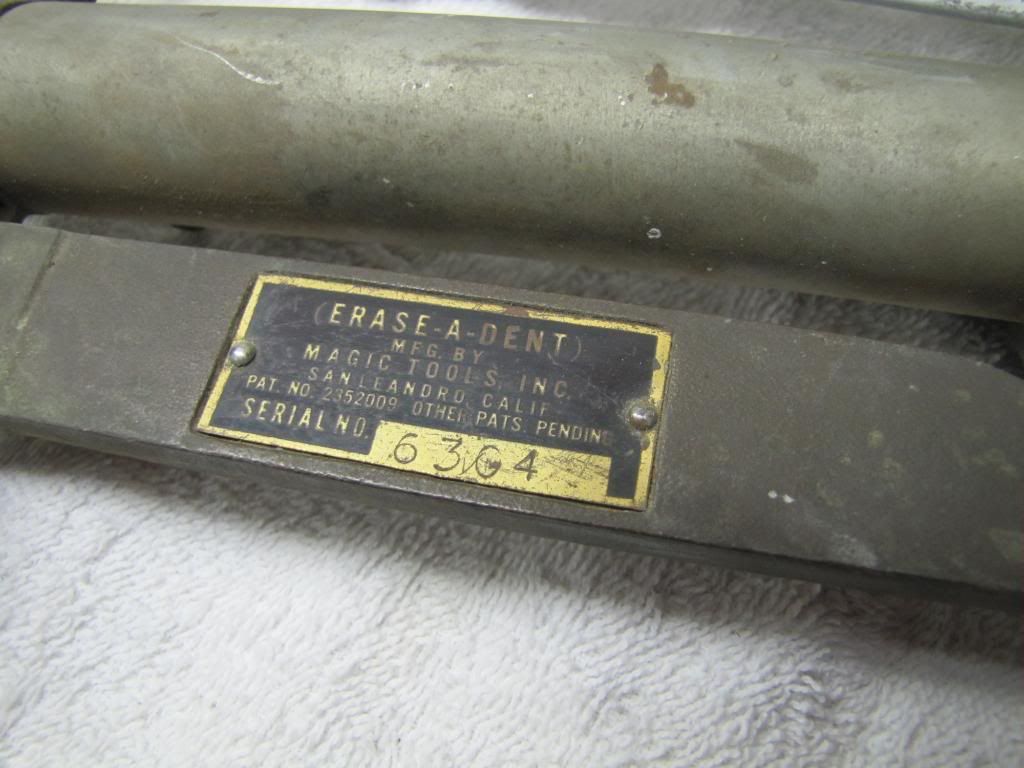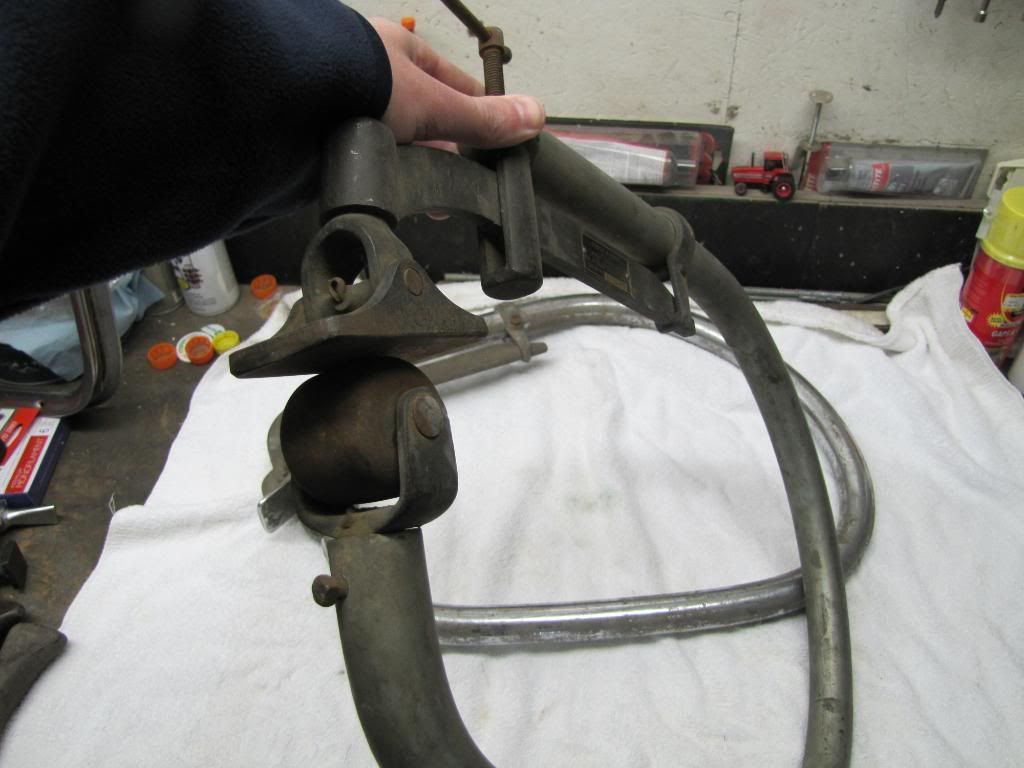Porter Ferguson F-3 fender and beading spoon. The point of this spoon is pull out wheel well lips after being folded up from a collision. You hook the lip of the spoon on the wheel well and with a hammer strike the pad driving the wheel well out. A few other companies made a similar tool, Martin still sells this tool.

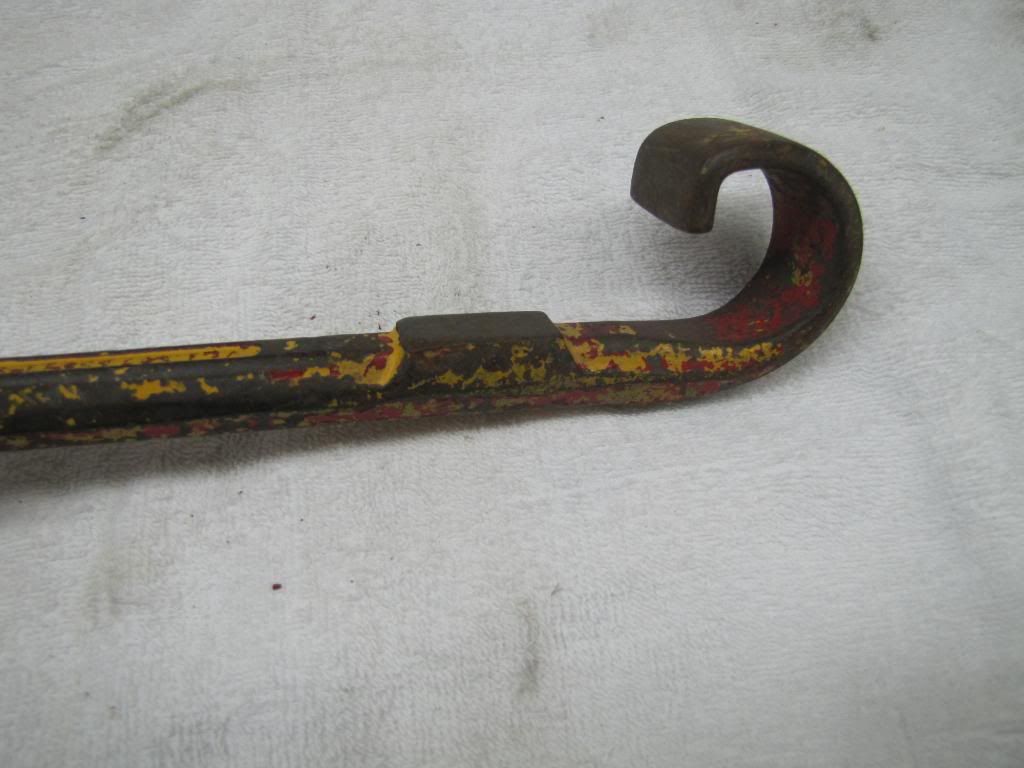
Porter Ferguson B-6 lower fender and cowl bracket spoon. This spoon is a NOS spoon, never been used, still has the original wax coating on the face and the original wax paper P-F wrapped their tools with.
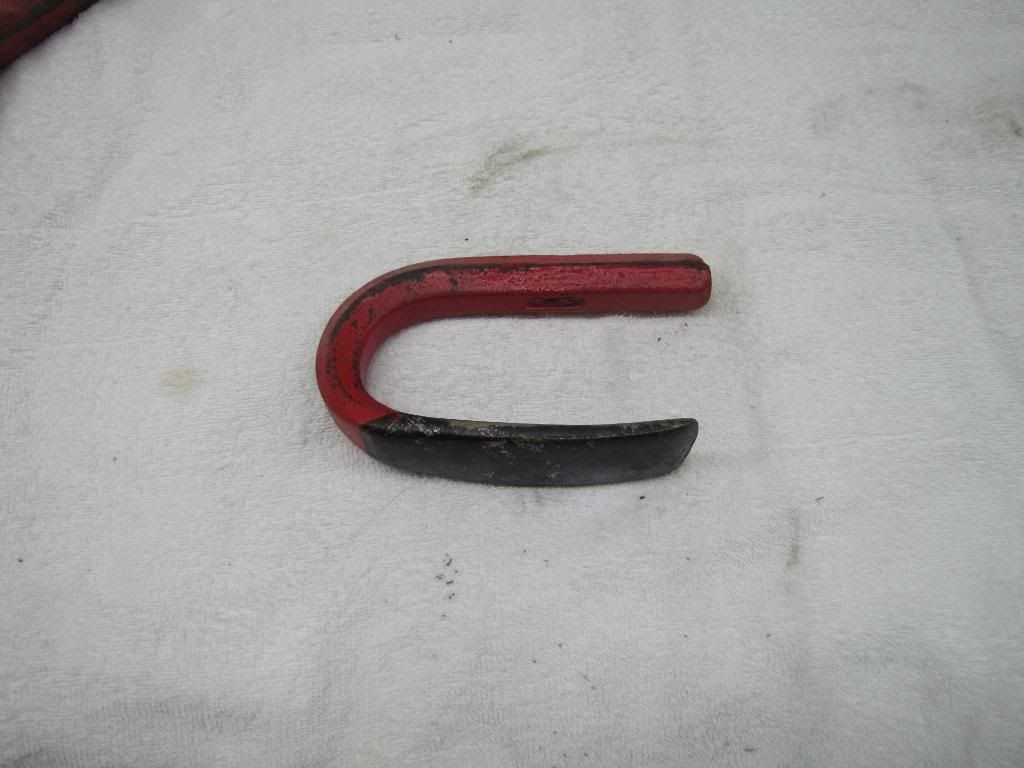
Porter Ferguson E-6 medium crown surfacing spoon. Same concept as the light weight spoon shown above, you place this spoon on a somewhat low crown panel and strike it with a hammer to stress relief a ridge.

Porter Ferguson drip rail spoon JDM-4.


Porter Ferguson JH-4 fender hook, not a spoon but an attachment used for porta powers to push out fender edges.
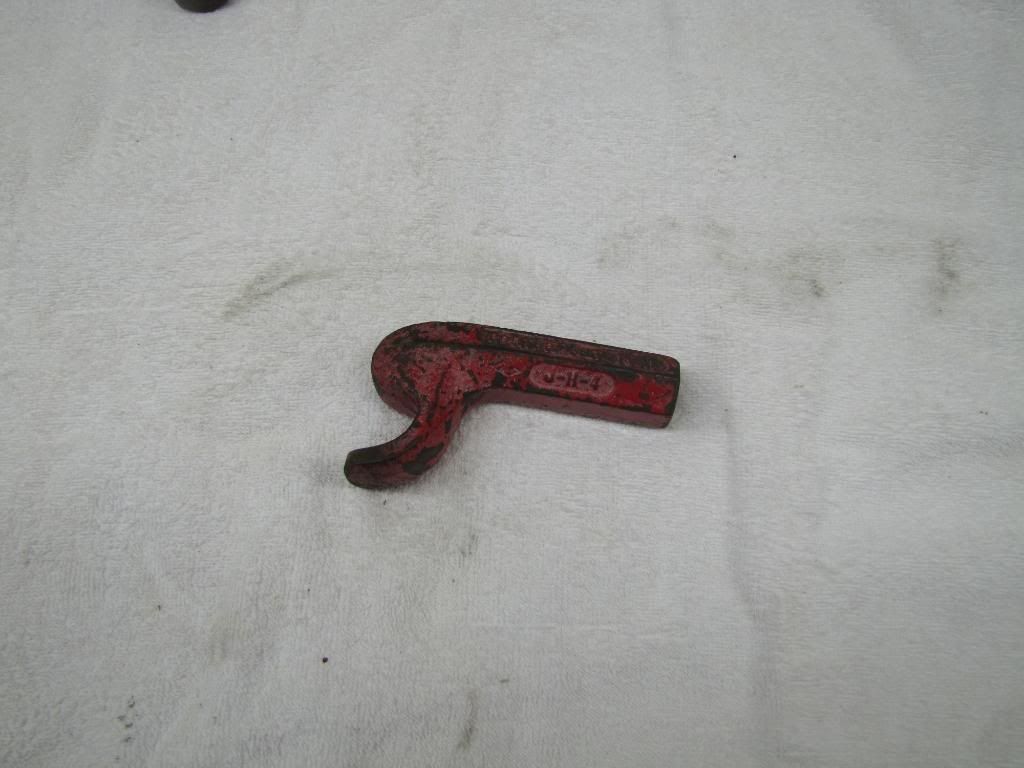
Porter Ferguson JOP-1 offset pushing caulking iron.

Now for a few specialty tools also long forgotten but dam do they work great, real shame they are no longer in production. First off, some drip rail pliers used to repair crushed roof drip rails. The one of the left is Porter Ferguson DMP-12 which I have two of, Fairmount on the right, and the bottom one is a Herbrand BF-80. Different designs but all work in the same manner.
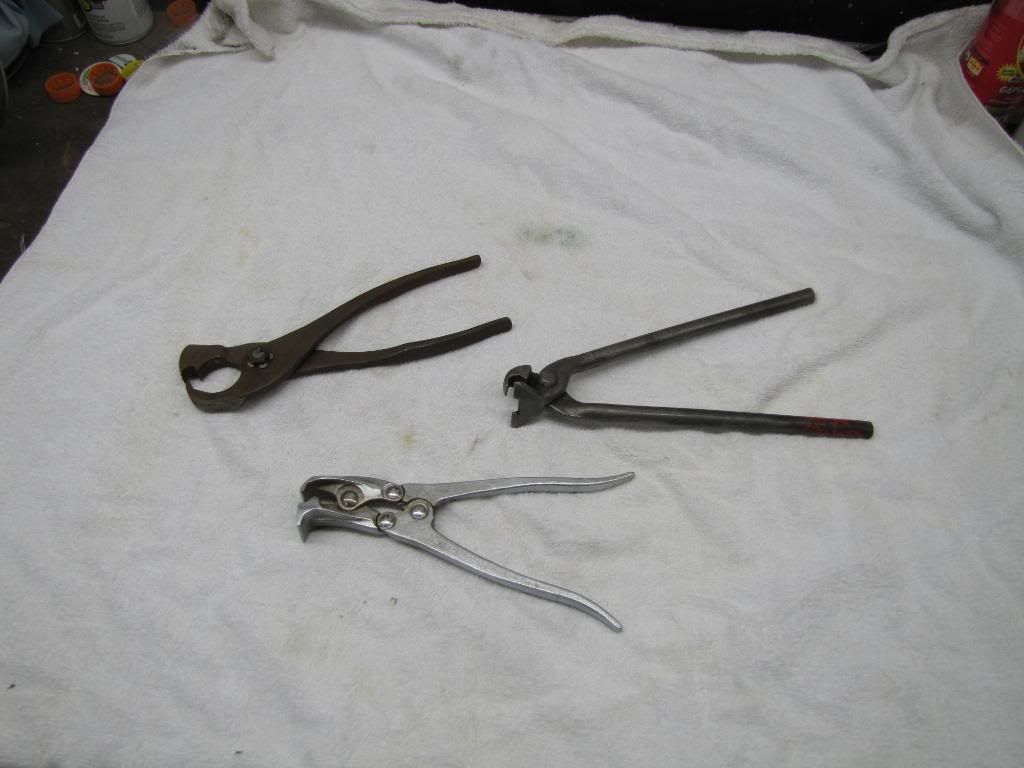
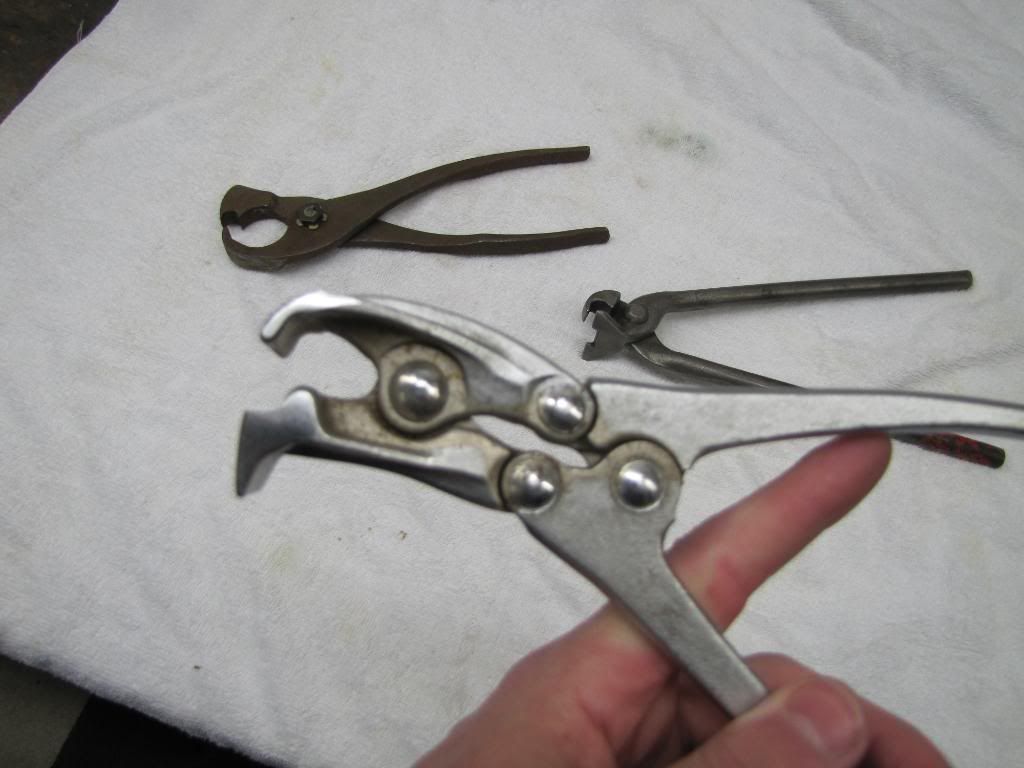
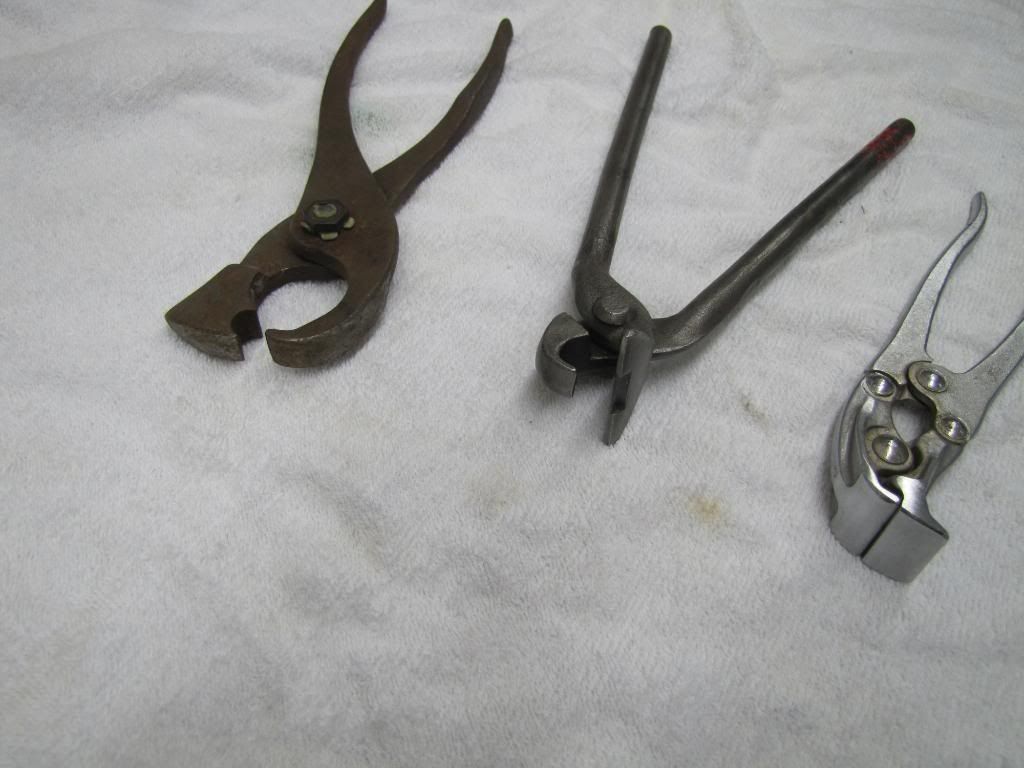
Another Porter Ferguson DMP-12 drip rail pliers but this one is completely different then one shown above. I donít have a picture of the two together, but the groove for the drip rail is squared off versus being a half moon like the one pictured above. Am guessing this one is an earlier version because the drip rails on the early Fords were square.
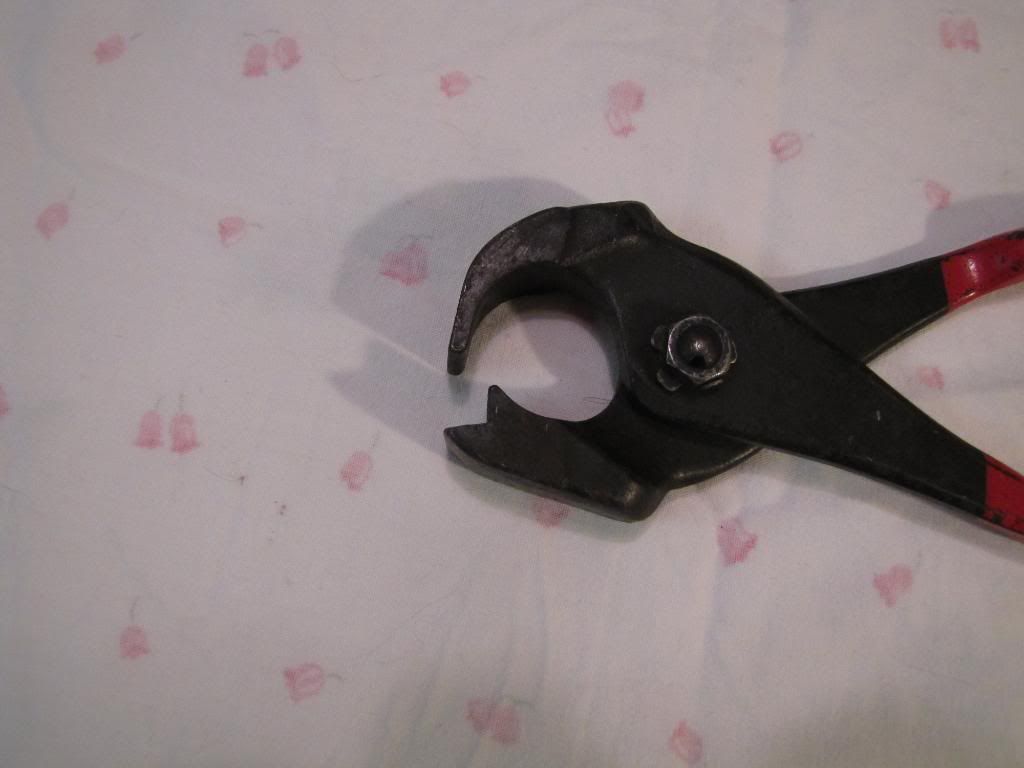
Called fender rollers, basically a hand held English wheel used to smooth out wrinkles in the metal. Became popular in the early 1920ís and began to fad away with the introduction of the pneumatic planishing hammer in the 1940ís. Both rollers are pretty darn near the same thing, the bottom one being an Erase-a-dent and the other is made by Robbins equipment and tool. The Robbins has a larger lower anvil and upper pad. The little playing around with fender rollers I have done has shown they work very well. Some of the first fender rollers were marketed by Stiles-Herman as Ford Model T fender smoothers. Stiles-Herman sold three different sized rollers and remains highly sought after even today and fetch a huge price tag.

